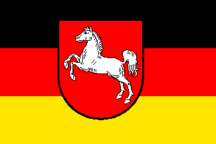| Carte online : https://www.braunschweig.de/english/city/sights/karte.php |
| https://www.braunschweig.de/english/city/sights_top10.php |
| 1 -2 - 3 - Burgplatz |
4 - Schlossplatz |
8 - Altstadmarkt |
5 - Magniviertel |
Michaelis District |
6- Aegidien district |
"St. Blasii Cathedral and the Burgplatz"
Dating back as far as the 9th century you could already find the castle of the Brunones on the Burgplatz. In the 12th century Henry the Lion built the original Dankwarderode Castle, the collegiate church St. Blasii, now the cathedral, and the Lion Statue. The neo-classical Vieweghaus as well as the many beautiful half-timbered buildings make the Burgplatz a very important historical architectural ensemble. The square still shows the original medieval ground plan.

Legend: 1. The Lion Statue / 2. Burgplatz / 3. Viewegsches Verlangshaus / 4. Huneborstelsches House, von Veltheim House / 5. Column ‘2000 Years of Christendom’ / 6. Dankwarderode Castle/ 7. Rathaus / 8. St. Blasii Cathedral / 9. Kleine Burg / 10. Stiftsherrenhäuser
- 1. The Lion Statue
Emblem of Henry the Lion and the first freestanding monument of the Middle Ages
- Henry the Lion erected the bronze-cast lion statue in around 1166. It was originally plated with gold. The lion was a depiction of Henry’s power and jurisdiction. This highly regarded Romanesque sculpture became a symbol of Braunschweig. The original can be admired in Dankwarderode Castle.
- 2. Burgplatz (Castle Square)
This was the centre of power of the Guelphs in the 12th century.
- Burgplatz is comprised of a group of buildings of great historical and cultural importance. The seat of the dukedom of Braunschweig has been located here since the 9th century. Duke Henry the Lion developed the Burgplatz area into a centre of power during the 12th century. The Burgplatz, which includes the castle, the cathedral, the Classicistic Vieweg House and other beautiful half-timbered structures still shows evidence of its medieval ground plan. The statue of the Lion of the Castle (Burglöwe) is located at the centre of the square.
- 3. Viewegsches Verlagshaus
This old publishing building now hosts the Braunschweig State Museum.
- The Vieweghaus was built between 1799 and 1804 and was a residential house and pub-lisher’s premises until 1976. It is one of the most important examples of classicist architecture from around 1800. Today it is home to the State Museum of Braunschweig. A permanent exhibition documents the history of the Braunschweig region from early history through to the present day. High-ranking topical exhibitions complement this. The museum has artefacts on display at other locations such as the exhibition centre “Hinter Ägidien”, in Wolfenbüttel and in Bortfeld.
- 4. Huneborstelsches House, von Veltheim House
This house is an example of the second building period in Braunschweig that was influenced by bourgeois art. Right next the house of family von Veltheim.
- Even today, the Burgplatz is still characterised by ist mediaeval layout.It is surrounded by numerous historic buildings such as the von Veltheim Haus – a noble townhouse from 1573 – and the Huneborstel Haus. Its famous, richly decorated semi-timbered facade from around 1525 and the original roof structure were moved here from the street Sack near the Burgplatz in 1901. The building known as the Gildehaus is today the offices of the Chambers of Crafts.
- 5. Column ‘2000 Years of Christendom’
This nine metre high bronze column depicts the history of Christendom by combining many single sculptures.
- The nine-metre high bronze column shows the history of Christianity in numerous sculptural elements. They show the life of Jesus Christ, the Reformation, the time of National Socialism and the attacks on the World Trade Center in 2001. A telescope allows visitors to see even the smallest details on the column created by the artist Jürgen Weber (1928–2007). The “Ringerbrunnen” fountain is another of Weber’s works (on the corner of Vor der Burg/Sack).
- 6. Dankwarderode Castle
This used to be the residence of Henry the Lion.
- Henry the Lion had this castle built in around 1175 as a residence inspired by the imperial palaces of the time. It was completely rebuilt following many alterations and fire damage from 1887 to 1906 in a historicized manner. The castle now accommodates the mediaeval section of Herzog Anton Ulrich Museum: In the „Knappensaal“ hall, some of the Guelph treasures are on display as well as valuable liturgicalclothing and the original Braunschweig Lion. On the upper floor there is a splendid great hall.
- 7. Rathaus (Town Hall)
This sign of municipal self-government was built in Neo-gothic style in 1894
- The town hall (“Rathaus”) and the city administration are housed in a neo-Gothic building which was built according to a design by the city building councillor of the time, Ludwig Winter, between the years of 1894 and 1900. Its tower is 61 metres high and has 161 steps to the top. From the top of the tower there is a wonderful view across the city rooftops. It takes its inspiration from the famous Belfries (city towers) in Flanders.
- 8. St. Blasii Cathedral
This Roman three-nave basilica was built in 1173 and is the burial place of Henry the Lion and Emperor Otto IV.
- In 1173, Henry the Lion commissioned the building of the St. Blasii collegiate church as a Romanesque arched basilica. Henry was buried there in 1195 next to his wife Mathilde. The tomb of Kaiser Otto IV, son of Henry the Lion, can also be found in the cathedral. The crypt serves as a place of rest for Guelph princes. The mediaeval fittings are of great significance: the Imervard cross, a seven-branched candelabrum, the Maria altar, the tombs of Henry the Lion and Mathilde as well as many artistic wall paintings.
- 9. Kleine Burg
This is one of the few preserved old streets in Braunschweig.
- 10. Stiftsherrenhäuser (Canon’s Residences)
These canon’s residences were built in the 15th century by the monastery St. Blasii
- The Cannon's Houses (Kleine Burg 2-4) were built around 1500 by the religious foundation of St. Blasius and served as housing for canons of the church. They were primarily the duke's chaplains and also trusted to perform important tasks for the court.
|
Schlossplatz
This palace, the residence of the Guelphs, was reconstructed in its original size and in its original setting, the Schlossplatz, with the help of old plans and historical photos. The adjoining shopping mall ‘Schloss Arkaden’ contains approximately 150 shops and restaurants.

Legend: 1. Ducal Palace / 2. Quadriga / 3. Rider Statues
- 1. Residence Palace
This residential palace of the Guelphs was reconstructed in its original location and in its original size using old design plans and historical photographs
-
This classicist residence palace was built between 1831 and 1841 according to plans by Carl Theodor Ottmer. Following severe war damage, it was pulled down in 1960. In 2006, the main façade including the front palace rooms was rebuilt, integrating 600 original parts. The reconstruction was carried out on the basis of the original plans and photographs. The building accommodates the city library, archives and the Schlossmuseum.
On the ground floor of the north half of the residence palace, there is Braunschweig’s Schlossmuseum. The original 19th century furniture, paintings and artworks give visitors an impression of the history and furnishings of the former residence and of court life. The most significant artefact is the largely reconstructed throne room, which was originally located on the first floor.
- 2. Quadriga
On the portico of the recently rebuilt Ducal Palace you will find the quadriga, with the city goddess Brunonia as the charioteer. The Quadriga is the largest in Europe with one charioteer.
-
As was the case with the historic palace, a charioteer formation stands on the portico of the rebuilt residence palace. The Quadriga is the largest in Europe with one charioteer; in this case, the city goddess Brunonia. The reconstruction was carried out from 2007 to 2008. True to the original formation, which was lost to a palace fire in 1865, the new group was cast with the aid of a plaster model by sculptor Ernst Rietschel, which has been preserved in the Albertinum of the Dresden Skulpturensammlung (sculpture collection).
The silicon-bronze group is more than 9 metres high, 7.5 metres wide and 9.5 metres long and weighs 25.8 tonnes.
- 3. Equestrian Statues
Carl Wilhelm Ferdinand of Braunschweig (1735-1806), Duke of Braunschweig-Wolfenbüttel and Friedrich Wilhelm (1771-1815), Duke of Braunschweig and Lüneburg in front of the Ducal Palace
- The two equestrian statues made of copper show the Dukes Carl Wilhelm Ferdinand von Braunschweig (1735–1806) and his son Friedrich Wilhelm (1771–1815). Both dukes fell as military leaders in the Napoleonic Wars. These statues from 1874 returned to this, their original location, on the reopening of the residence palace.
|
On the Altstadtmarkt
The Altstadtmarkt was built during the 12th century as the centre of the purlieus Altstadt. It was purposely built in a rectangular shape, as can be seen in the spatial and architectural connection between St. Martini Church and the Altstadtrathaus (Old Town Hall) on the western side. Together with the northern wall of the Gewandhaus (Cloth Hall) and the facades of the residential and business buildings and the fountain these buildings form an impressive group on the south-eastern side.

Legend: 1. Stechinelli House / 2. Altstadtmarkt/ 3. Marien Fountain / 4. Gewandhaus/ 5. Altes Zoll- und Landwehrhaus / 6. St. Martini Church / 7. Altstadtrathaus / 8. Martino-Katharineum / 9. Haus zu den sieben Türmen
- 1. Stechinelli House
Francesco Capellini, also called Stechninelli, built this house in 1690
- The Stechinelli-Haus originates from 1630, was altered in 1690 and was rebuilt after the Second World War. Its name pays homage to its architect, Francesco Capellini, referred to as “Stechinelli”. As a son of an impoverished noble family, he is said to have saved the life of the last Duke of Celle, Georg Wilhelm, in Venice. To thank him, the Duke took him into his service as his General Post Master. In this role he achieved wealth and renown.
- 2. Altstadtmarkt
There has been trading on this square for more than 700 years
-
The Old City Market has been a location for trade for 700 years. During the Middle Ages, anything which was of interest took place here.
The square, which was laid out during the 12th century, was the main market place, location of trade fairs, fairground, execution place, venue for rider's games, parades and processions. A city hall, as a symbol of city self-administration, was documented in the Old City in 1253. This was before the Old City Hall which exists today was built.
The Old City Market, along with the Old City Hall (Altstadtrathaus), Church of St. Martin (Martinikirche) (12th-14th centuries), the Old Customs House (Altes Zollhaus) from 1643 and the Cloth Merchant's House (Gewandhaus) with a Renaissance gable from 1590/91 are all treasures from the past. The Fountain of the Virgin Mary (Marienbrunnen), which was cast in lead in 1408, is the natural centre of the market.
- 3. Marien Fountain
A unique example of late Gothic craftsmanship from the year 1408
- At the centre of the square "Altstadtmarkt" there is the lead Maria fountain dating back to 1408 – a unique documentation of late gothic artistic handwork. It is decorated with biblical, imperial and town history motifs. After being largely destroyed in the Second World War, the fountain which now stands at the Altstadtmarkt is a reconstruction from 1988 and the remains of the original can be seen in the Altstadtrathaus building.
- 4. Gewandhaus
Formerly the storage and sales building of the distinguished cloth merchant’s guild it is today the seat of the local chamber of commerce and industry
- Braunschweig experienced a period of economic boom as a hub between key trading routes and as a member of the Hanseatic League from the 13th century. The “Gewandhaus” was first documented in 1303: as a warehouse and trading place for “cloth cutters”, the most distinguished guild in the old town. The restored east gable, originating from 1590 and rebuilt between 1948 and 1950, is the most significant work of Renaissance architecture in Braunschweig. The plainer west façade shows a portal and peak-arched windows from medieval building times. The building is now home to the Chamber of Commerce.
- 5. Old Customs and Landwehr-Militia Building
It is a late example of the great expertise of the Braunschweig Fachwerk craftsmen which gave this Hanseatic city its character from the 15th to the 17th century.
- The “Altes Zoll- und Landwehrhaus” originates from Rüningen and was built there in 1643. It was dismantled in the years 1948 to 1950 and rebuilt at the cloth hall (“Gewandhaus”) in an altered form. The building is reminiscent of the row of half-timbered (“Fachwerk”) houses at the cloth hall which were destroyed in 1944. It is a late example of the great expertise of the Braunschweig Fachwerk craftsmen which gave this Hanseatic city its character from the 15th to the 17th century.
- 6. St. Martini Church
This church was built as the parish church of the purlieus Altstadt in the 12th century.
- Building work on the Martini Church began around 1190 as a Romanesque main and market church for the old town. The inspiration for the three-aisled pillar basilica was St. Blasii Cathedral. It was converted to a Gothic hall church between 1250 and 1400. The west section, the middle aisle, transept and the old choir arches remain from the Romanesque building phase. Remarkable aspects of the church include the early baroque organ, the high altar (1728), the baptismal font (15th century) and the chancel (17th century).
- 7. Altstadtrathaus (Old Town Hall)
One of the most impressive medieval building monuments
- The “Altstadtrathaus” (Old Town Hall) is among the most significant medieval town halls in Germany. The oldest parts of the building originate from the 13th century. The “Braunschweiger Elle” (early measurement standard) fixed to the wall of the Altstadtrathaus is 57.07cm long and was provided to assist traders of cloth. In the gothic alcoves from the 15th century, there are nine sculptures of rulers with their wives. Today, the Municipal Museum presents collections of historic artefacts from the town in the Altstadtrathaus. In the Old Town Hall, a large wooden model shows the city as it was around the year 1600.
- 8. Martino-Katharineum
This oldest school in Braunschweig has its roots in the Latin schools Martineum and Katharineum that were founded in 1415.
-
This building is the oldest of Braunschweig’s schools. With the Pope’s permission, the city council was allowed to build a Latin school in each of the church parishes St. Martini and St. Katharinen in 1415. In 1828, they were merged. Since 1868, the school has borne its current name and occupied a new building in Breite Straße.
Famous students of this school include: Richard Dedekind, Carl Friedrich Gauß, August Heinrich Hoffmann von Fallersleben, Louis Spohr and the football pioneer Konrad Koch.
- 9. Haus zu den sieben Türmen (The House of the seven Towers)
The “Haus zu den sieben Türmen” was first mentioned in 1249 – its medieval predecessor was decorated with seven small towers.
- The “Haus zu den sieben Türmen” was first mentioned in 1249 – its medieval predecessor was decorated with seven small towers. Lore has it that they were reminiscent of a state prison in Constantinople in which the man who built it (a companion of Henry the Lion) was once imprisoned. The Baroque house from 1708 which stands today bears a relief in its ga-bled dormer documenting that historic episode. The arched openings on the ground floor (the socalled “Messgewölbe”) served as a venue for Braunschweig’s exhibitions of wares in the 18th century.
|
Magniviertel
One of the oldest city quarters in Braunschweig is the Magni Quarter with its centrally located Magni church square and the Magni church, founded in the 11th century. The quarter is made up of a cohesive group of half-timbered (“Fachwerk”) houses, which are home to small cafés and shops. Ackerhof 2 has the oldest Fachwerk inscription in Germany: Anno M CCCC XXX II (1432).

Legend: 1. Löwenwall/Obelisk / 2. Städtisches Museum / 3. Magniviertel / 4. Herrendorftwete on the Magnitor / 5. St. Magni / 6. Behind Magni Church / 7. Happy RIZZI House / 8. Herzog Anton Ulrich-Museum
- 1. Löwenwall and Obelisk
This 22 metres high obelisk reminds us of the Dukes Karl Wilhelm Ferdinand and Friedrich Wilhelm.
- The Löwenwall was known as “Monumentplatz” until 1904 and dates back to the construction of the town’s wall ring from 1805 to 1831 by Peter Joseph Krahe. It was installed in place of a Baroque bastion and was inspired by a Roman circus. The 22-metre-high obelisk is a memorial to the Dukes Carl Wilhelm Ferdinand and Friedrich Wilhelm, who fell in battle against Napoleon.
- 2. Municipal Museum (Städtisches Museum)
The Municipal Museum was founded in 1861.
- This museum opened in 1906 and focusses on paintings and graphics from the 19th century, Braunschweig art handicrafts and the history of life in the Braunschweig region. One particular attraction is the impressive atrium with wall paintings illustrating the history of the city. The core of the collection of paintings was formed by the paintings from the Braunschweig Art Association founded in 1832. The city history section can be found in the Altstadtrathaus (Old Town Hall).
- 3. Magniviertel (Magni Quarter)
Delightful little alleys with pretty half-timbered buildings give this historical district a cosy atmosphere.
- Today, the Magni Quarter reflects in a particular manner the sense of both tradition and reality which is characteristic of the citizens of Braunschweig. Each year in late summer this quarter is the scene of a lively old city festival. Since the renovation of many of the medieval houses in this quarter during the last several years, it has gone a long way towards becoming a jewel among Braunschweig's islands of tradition.
- 4. Herrendorftwete on the Magnitor
The house with the number 1 in Gothic design was built before 1490.
- House no. 1 is a Gothic house from 1490 with a simple stepped frieze and anchoring beams. The oriel was put in place during the 18th century.
- 5. St. Magni
The name Braunschweig (Brunesguik) was first mentioned in documents in this church.
- The former church of the old lord’s village of Brunswiek was consecrated in 1031. The first mention of Braunschweig itself was in this consecration document. From 1252, building work was performed on a new hall church. It was badly damaged in 1944 and reconstructed in a form fitting to the time. The glass windows by Gottfried von Stockhausen are particularly worth seeing. They show the Children of Israel crossing the Red Sea and the sculpture “Der Rufer” (“The Caller”) by Bodo Kampmann.
- 6. Behind Magni Church
On this tranquil square a piece of the old Braunschweig has been preserved.
- A piece of old Braunschweig and a place of contemplative tranquility has been preserved here. House no. 1 is an example of bourgeois construction from around 1500. It was moved from Ölschlägern 29 to this location in 1916. The second floor and the attic are from 1645. House no. 4 originates from 1514 and used to be located at Kohlmarkt 5. It has Gothic beam ends, patterned cleats and beams inscriptions.
- 7. Happy RIZZI House
These laughing and colourful towers by the New York artist James Rizzi present themselves as an accessible building sculpture.On the fringe of the Magni Quarter stands the Happy RIZZI House, designed by the interna-tionally renowned New York artist James Rizzi. The Braunschweig architect Konrad Kloster carried out the construction, completing it in 2001. Today it is an office building and is there-fore not open to the public.
- 8. Herzog Anton Ulrich-Museum
Founded in the year 1754 this outstanding collection is the oldest public museum in Germany.
-
The foundation stone for today’s famous collection of old art was laid by Herzog Anton Ulrich of Braunschweig-Lüneburg. In addition to numerous old masters, such as Rubens and Vermeer, he also acquired antique objects, ornate furniture and East-Asian objects, for example Japanese lacquer works, which are even today still renowned throughout Europe and beyond.
The museum is displaying its medieval exhibits in the Knappensaal hall.
During the course of the largest cultural building project in Lower Saxony in recent decades, the museum building from the 19th century has been completely renovated from 2009 to 2016. Freed from subsequent installations and equipped with the latest technology, the Herzog Anton Ulrich Museum is re-opened.
|
Michaelis District
The centre of this historical district is the Michaelis Church that was dedicated in 1157 and was one of the parish churches of the purlieus Altstadt. Here you can detect a characteristic urban landscape that was typical for Braunschweig right up to the destruction in the war. It was a high-density area and you can encounter numerous building periods. Along Güldenstraße, Prinzenweg and Echternstraße numerous historically valuable buildings, most of them half-timbered, were preserved.

Legend: 1. Gieselerwall City Wall / 2. Haus zur Hanse / 3. St. Michaelis / 4. Alte Knochenhauer Straße / 5. Michaelis Court / 6. Echternstraße 16 / 7. Echternstraße 14
- 1. Gieselerwall City Wall
These nearly 5 metres high wall remains were part of the oldest fortifications of the city.
- The remains of the 5-metre city wall between Prinzenweg and Gieselerwall are a reminder of the medieval fortifications of Braunschweig in the form of walls and moats. These city walls were built on the initiative of Henry the Lion and his son Kaiser Otto IV throughout the late 12th and early 13th century.
- 2. Haus zur Hanse
The carved wave design on the beams of this former residential and office building dates back to the year 1567.
- Butcher and councillor Cyriakus Haberland built this grand Renaissance half-timbered (“Fachwerk”) house in Güldenstraße 7 in 1567. The trusses and carvings on the upper storey originate from this time. The hatches on the roof served to access the storage attic. More carvings were added in 1869. Today the building is a hotel and restaurant.
- 3. St. Michaelis
The Church of St. Michael, which was consecrated in 1157, was a parish church within the Old City district.
- This church, first consecrated in 1157, was converted into a Gothic hall church in the 14th century. The angular tower originates from the time around 1250. Next to the bride door in the north side aisle there is a still-legible inscription documenting the new consecration in 1379 in medieval “Plattdeutsch” dialect. The depiction of Christ on the cross came into being at the same time thanks to sponsorship.
- 4. Alte Knochenhauer Straße
Houses dating back to the 15th century with lavishly constructed facades.
-
The house at no. 11, which was built in 1470, is the oldest example of an original façade with figure cleats, beam ends and a stepped frieze with Gothic tracery motifs. House no. 12, which was built around 1490, is a simple Gothic style building with a stepped frieze. The door is from around 1740.
House no. 13 was built in 1489 and has a stepped frieze, beam ends and carved cleats. St. George can be seen at the far left.
- 5. Michaelis Court
This court highlights the romance, nostalgia and real craftsmanship of this medieval city district
- Michaelishof complements the traditional sights bordering the partially preserved city wall and Echternstraße and makes this area into a complete medieval quarter. Michaelishof, along with the Church of St. Michael and the bordering "Haus zur Hanse", illustrate an effect of romance, nostalgia and true craftsmanship.
- 6. Echternstraße 16
This was formerly home to the Stobwasser lacquerware factory.
- Stobwasser set up his lacquerwork factory in this house. This was an important branch of commerce for craftsmen in Braunschweig in the 18th century. A collection of valuable lacquerwork by Stobwasser can be seen at the Municipal Museum (Städtische Museum).
- 7. Echternstraße 14
A preacher’s widow’s house
|
Aegidien District
In the centre stands Aegidien Church, formerly the house of worship of the Benedictine monks of 1115. North of the church but still on the ground of cloistral immunity the Aegidienmarkt was built as the market square of the medieval purlieus Altewiek. Over the years Ägidienstraße, Spohrplatz, Mönchstraße and Hinter Ägidien were covered with residential buildings of mainly petit bourgeois design. Today the preserved and very varied buildings in these small alleys and around the little squares define the special atmosphere of this district.

Legend: 1. Spohrplatz / 2. St. Aegidien / 3. Leisewitz House / 4. Othilien District – Ägidienstraße
- 1. Spohrplatz
Birthplace of the composer Louis Spohr..
- Louis Spohr (1784–1859) lived in this historic villa with his parents through to 1786. He is considered as an influential composer between classic and romantic. The house, which was restored in 2003 in its original colours, is privately inhabited and not open to the public. Its half-timbered (“Fachwerk”) construction dates back to 1356, making it one of the oldest in Northern Germany.
- 2. St. Aegidien
House of worship of the former Benedictine order.
- A city fire in 1278 destroyed the Romanesque church of the Benedictine Abbey of St. Maria and St. Aegidius founded in 1115. The choir of the new Gothic building is the sole example of Gothic cathedral architecture in Braunschweig, whereas the nave of the church was conse-crated in 1478. In the Romanesque east wing (12th century), there are the registry, charter house, parlatorium (speaking hall), refectory (dining hall) and the remaining part of the cloister (State Museum).
- 3. Leisewitz House
This was the residence of the playwright Johann Anton Leisewitz for many years.
- The Leisewitz House, which was moved to Spohrplatz in 1978, was the long-time residence of dramatist Johann Anton Leisewitz (1752-1806).
- 4. Othilien District – Ägidienstraße
Only the house Ägidienstraße 5 remains of this modest quarter with its densely packed half-timbered buildings
- The remote "Othilien Quarter" includes a promontory which is on what used to be a far branch of the Oker around the area of the "Konsumverein" house. It belonged to the free Monastery of St. Gideon and could only be reached by a bridge near the former Gideon Mill at an extension of the Ägidienstraße which was known as Mühlenstraße until 1861. Half-timbered houses stood close together in this area and the alleys leading to the church were covered up which attests to the modest social status of the residents. The half-timbered house at Ägidienstraße 5 from the 16th century is the only one which has been preserved. It has a decoration on the threshold beam of the upper floor and the remains of a portal decoration in the form of a curved donkey's back next to the Classicistic door to the house. The other buildings have been rebuilt or are modern and have been decorated with inscriptions and carvings of figures in an attempt to blend with the historical tradition.
|





























